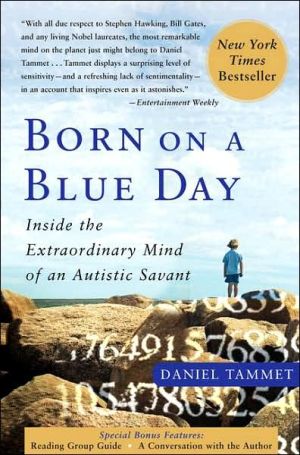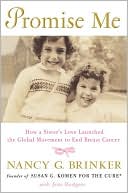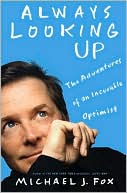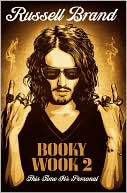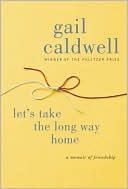Born on a Blue Day: Inside the Extraordinary Mind of an Autistic Savant
Born on a Blue Day is a journey into one of the most fascinating minds alive today—guided by the owner himself. Daniel Tammet is virtually unique among people who have severe autistic disorders in that he is capable of living a fully independent life and able to explain what is happening inside his head.\ He sees numbers as shapes, colors, and textures, and he can perform extraordinary calculations in his head. He can learn to speak new languages fluently, from scratch, in a week. In 2004, he...
Search in google:
One of the world's fifty living autistic savants is the first and only to tell his compelling and inspiring life story—-and explain how his incredible mind works. Publishers Weekly This unique first-person account offers a window into the mind of a high-functioning, 27-year-old British autistic savant with Asperger's syndrome. Tammet's ability to think abstractly, deviate from routine, and empathize, interact and communicate with others is impaired, yet he's capable of incredible feats of memorization and mental calculation. Besides being able to effortlessly multiply and divide huge sums in his head with the speed and accuracy of a computer, Tammet, the subject of the 2005 documentary Brainman, learned Icelandic in a single week and recited the number pi up to the 22,514th digit, breaking the European record. He also experiences synesthesia, an unusual neurological syndrome that enables him to experience numbers and words as "shapes, colors, textures and motions." Tammet traces his life from a frustrating, withdrawn childhood and adolescence to his adult achievements, which include teaching in Lithuania, achieving financial independence with an educational Web site and sustaining a long-term romantic relationship. As one of only about 50 people living today with synesthesia and autism, Tammet's condition is intriguing to researchers; his ability to express himself clearly and with a surprisingly engaging tone (given his symptoms) makes for an account that will intrigue others as well. (Jan.)Copyright 2006 Reed Business Information.
1Blue Nines and Red Words I was born on January 31, 1979 -- a Wednesday. I know it was a Wednesday, because the date is blue in my mind and Wednesdays are always blue, like the number 9 or the sound of loud voices arguing. I like my birth date, because of the way I'm able to visualize most of the numbers in it as smooth and round shapes, similar to pebbles on a beach. That's because they are prime numbers: 31, 19, 197, 97, 79 and 1979 are all divisible only by themselves and 1. I can recognize every prime up to 9,973 by their "pebble-like" quality. It's just the way my brain works. I have a rare condition known as savant syndrome, little known before its portrayal by actor Dustin Hoffman in the Oscar-winning 1988 film Rain Man. Like Hoffman's character, Raymond Babbitt, I have an almost obsessive need for order and routine which affects virtually every aspect of my life. For example, I eat exactly 45 grams of porridge for breakfast each morning; I weigh the bowl with an electronic scale to make sure. Then I count the number of items of clothing I'm wearing before I leave my house. I get anxious if I can't drink my cups of tea at the same time each day. Whenever I become too stressed and I can't breathe properly, I close my eyes and count. Thinking of numbers helps me to become calm again. Numbers are my friends, and they are always around me. Each one is unique and has its own personality. The number 11 is friendly and 5 is loud, whereas 4 is both shy and quiet -- it's my favorite number, perhaps because it reminds me of myself. Some are big -- 23, 667, 1,179 -- while others are small: 6, 13, 581. Some are beautiful, like 333, and some are ugly, like 289. To me, every number is special. No matter where I go or what I'm doing, numbers are never far from my thoughts. In an interview with talk show host David Letterman in New York, I told David he looked like the number 117 -- tall and lanky. Later outside, in the appropriately numerically named Times Square, I gazed up at the towering skyscrapers and felt surrounded by 9s -- the number I most associate with feelings of immensity. Scientists call my visual, emotional experience of numbers synesthesia, a rare neurological mixing of the senses, which most commonly results in the ability to see alphabetical letters and/or numbers in color. Mine is an unusual and complex type, through which I see numbers as shapes, colors, textures and motions. The number 1, for example, is a brilliant and bright white, like someone shining a flashlight into my eyes. Five is a clap of thunder or the sound of waves crashing against rocks. Thirty-seven is lumpy like porridge, while 89 reminds me of falling snow. Probably the most famous case of synesthesia was the one written up over a period of thirty years from the 1920s by the Russian psychologist A. R. Luria of a journalist called Shereshevsky with a prodigious memory. "S," as Luria called him in his notes for the book The Mind of a Mnemonist, had a highly visual memory which allowed him to "see" words and numbers as different shapes and colors. "S" was able to remember a matrix of 50 digits after studying it for three minutes, both immediately afterwards and many years later. Luria credited Shereshevsky's synesthetic experiences as the basis for his remarkable short- and long-term memory. Using my own synesthetic experiences since early childhood, I have grown up with the ability to handle and calculate huge numbers in my head without any conscious effort, just like the Raymond Babbitt character. In fact, this is a talent common to several other real-life savants (sometimes referred to as "lightning calculators"). Dr. Darold Treffert, a Wisconsin physician and the leading researcher in the study of savant syndrome, gives one example, of a blind man with "a faculty of calculating to a degree little short of marvelous" in his book Extraordinary People: \ When he was asked how many grains of corn there would be in any one of 64 boxes, with 1 in the first, 2 in the second, 4 in the third, 8 in the fourth, and so on, he gave answers for the fourteenth (8,192), for the eighteenth (131,072) and the twenty-fourth (8,388,608) instantaneously, and he gave the figures for the forty-eighth box (140,737,488,355,328) in six seconds. He also gave the total in all 64 boxes correctly (18,446,744,073,709,551, 616) in forty-five seconds.\ My favorite kind of calculation is power multiplication, which means multiplying a number by itself a specified number of times. Multiplying a number by itself is called squaring; for example, the square of 72 is 72 x 72 = 5,184. Squares are always symmetrical shapes in my mind, which makes them especially beautiful to me. Multiplying the same number three times over is called cubing or "raising" to the third power. The cube, or third power, of 51 is equivalent to 51 x 51 x 51 = 132,651. I see each result of a power multiplication as a distinctive visual pattern in my head. As the sums and their results grow, so the mental shapes and colors I experience become increasingly more complex. I see 37's fifth power -- 37 x 37 x 37 x 37 x 37 = 69,343,957 -- as a large circle composed of smaller circles running clockwise from the top around. When I divide one number by another, in my head I see a spiral rotating downwards in larger and larger loops, which seem to warp and curve. Different divisions produce different sizes of spirals with varying curves. From my mental imagery I'm able to calculate a sum like 13 ÷ 97 (0.1340206...) to almost a hundred decimal places. I never write anything down when I'm calculating, because I've always been able to do the sums in my head, and it's much easier for me to visualize the answer using my synesthetic shapes than to try to follow the "carry the one" techniques taught in the textbooks we are given at school. When multiplying, I see the two numbers as distinct shapes. The image changes and a third shape emerges -- the correct answer. The process takes a matter of seconds and happens spontaneously. It's like doing math without having to think. Different tasks involve different shapes, and I also have various sensations or emotions for certain numbers. Whenever I multiply with 11 I always experience a feeling of the digits tumbling downwards in my head. I find 6s hardest to remember of all the numbers, because I experience them as tiny black dots, without any distinctive shape or texture. I would describe them as like little gaps or holes. I have visual and sometimes emotional responses to every number up to 10,000, like having my own visual, numerical vocabulary. And just like a poet's choice of words, I find some combinations of numbers more beautiful than others: ones go well with darker numbers like 8s and 9s, but not so well with 6s. A telephone number with the sequence 189 is much more beautiful to me than one with a sequence like 116. This aesthetic dimension to my synesthesia is something that has its ups and downs. If I see a number I experience as particularly beautiful on a shop sign or a car license plate, there's a shiver of excitement and pleasure. On the other hand, if the numbers don't match my experience of them -- if, for example, a shop sign's price has "99 pence" in red or green (instead of blue) -- then I find that uncomfortable and irritating. It is not known how many savants have synesthetic experiences to help them in the areas they excel in. One reason for this is that, like Raymond Babbitt, many suffer profound disability, preventing them from explaining to others how they do the things that they do. I am fortunate not to suffer from any of the most severe impairments that often come with abilities such as mine. Like most individuals with savant syndrome, I am also on the autistic spectrum. I have Asperger's syndrome, a relatively mild and high-functioning form of autism that affects around 1 in every 300 people in the United Kingdom. According to a 2001 study by the U.K.'s National Autistic Society, nearly half of all adults with Asperger's syndrome are not diagnosed until after the age of sixteen. I was finally diagnosed at age twenty-five following tests and an interview at the Autism Research Centre in Cambridge. Autism, including Asperger's syndrome, is defined by the presence of impairments affecting social interaction, communication, and imagination (problems with abstract or flexible thought and empathy, for example). Diagnosis is not easy and cannot be made by a blood test or brain scan; doctors have to observe behavior and study the individual's developmental history from infancy. People with Asperger's often have good language skills and are able to lead relatively normal lives. Many have above-average IQs and excel in areas that involve logical or visual thinking. Like other forms of autism, Asperger's is a condition affecting many more men than women (around 80 percent of autistics and 90 percent of those diagnosed with Asperger's are men). Single-mindedness is a defining characteristic, as is a strong drive to analyze detail and identify rules and patterns in systems. Specialized skills involving memory, numbers, and mathematics are common. It is not known for certain what causes someone to have Asperger's, though it is something you are born with. \ \ \ For as long as I can remember, I have experienced numbers in the visual, synesthetic way that I do. Numbers are my first language, one I often think and feel in. Emotions can be hard for me to understand or know how to react to, so I often use numbers to help me. If a friend says they feel sad or depressed, I picture myself sitting in the dark hollowness of number 6 to help me experience the same sort of feeling and understand it. If I read in an article that a person felt intimidated by something, I imagine myself standing next to the number 9. Whenever someone describes visiting a beautiful place, I recall my numerical landscapes and how happy they make me feel inside. By doing this, numbers actually help me get closer to understanding other people.\ Sometimes people I meet for the first time remind me of a particular number and this helps me to be comfortable around them. They might be very tall and remind me of the number 9, or round and remind me of the number 3. If I feel unhappy or anxious or in a situation I have no previous experience of (when I'm much more likely to feel stressed and uncomfortable), I count to myself. When I count, the numbers form pictures and patterns in my mind that are consistent and reassuring to me. Then I can relax and interact with whatever situation I'm in. Thinking of calendars always makes me feel good, all those numbers and patterns in one place. Different days of the week elicit different colors and emotions in my head: Tuesdays are a warm color while Thursdays are fuzzy. Calendrical calculation -- the ability to tell what day of the week a particular date fell or will fall on -- is common to many savants. I think this is probably due to the fact that the numbers in calendars are predictable and form patterns between the different days and months. For example, the thirteenth day in a month is always two days before whatever day the first falls on, excepting leap years, while several of the months mimic the behavior of others, like January and October, September and December, and February and March (the first day of February is the same as the first day of March). So if the first of February is a fuzzy texture in my mind (Thursday) for a given year, the thirteenth of March will be a warm color (Tuesday). In his book The Man Who Mistook His Wife for a Hat, writer and neurologist Oliver Sacks mentions the case of severely autistic twins John and Michael as an example of how far some savants are able to take calendrical calculations. Though unable to care for themselves (they had been in various institutions since the age of seven), the twins were capable of calculating the day of the week for any date over a 40,000-year span. Sacks also describes John and Michael as playing a game that involved swapping prime numbers with each other for hours at a time. Like the twins, I have always been fascinated by prime numbers. I see each prime as a smooth-textured shape, distinct from composite numbers (non-primes) that are grittier and less distinctive. Whenever I identify a number as prime, I get a rush of feeling in my head (in the front center) which is hard to put into words. It's a special feeling, like the sudden sensation of pins and needles. Sometimes I close my eyes and imagine the first thirty, fifty, hundred numbers as I experience them spatially, synesthetically. Then I can see in my mind's eye just how beautiful and special the primes are by the way they stand out so sharply from the other number shapes. It's exactly for this reason that I look and look and look at them; each one is so different from the one before and the one after. Their loneliness among the other numbers makes them so conspicuous and interesting to me. There are moments, as I'm falling into sleep at night, that my mind fills suddenly with bright light and all I can see are numbers -- hundreds, thousands of them -- swimming rapidly over my eyes. The experience is beautiful and soothing to me. Some nights, when I'm having difficulty falling asleep, I imagine myself walking around my numerical landscapes. Then I feel safe and happy. I never feel lost, because the prime number shapes act as signposts. Mathematicians, too, spend a lot of time thinking about prime numbers, in part because there is no quick or simple method for testing a number to see whether or not it is prime. The best known is called "the Sieve of Eratosthenes" after an ancient Greek scholar, Eratosthenes of Cyrene. The sieve method works in this way: Write out the numbers you want to test, for example 1 to 100. Starting with 2 (1 is neither prime nor composite), cross out every second number: 4, 6, 8...up to 100. Then move to 3 and cross out every third number: 6, 9, 12...then move to four and cross out every fourth number: 8, 12, 16...and so on, until you are left with only a few numbers that do not ever get crossed out: 2, 3, 5, 7, 11, 13, 17, 19, 23, 29, 31...These are the prime numbers; the building blocks of my numerical world. My synesthesia also affects how I perceive words and language. The word ladder, for example, is blue and shiny, while hoop is a soft, white word. The same thing happens when I read words in other languages: jardin, the French word for "garden," is a blurred yellow, while hnugginn -- Icelandic for "sad" -- is white with lots of blue specks. Synesthesia researchers have reported that colored words tend to obtain their colors from the initial letter of the word, and this is generally true for me: yogurt is a yellow word, video is purple (perhaps linked with violet) and gate is green. I can even make the color of a word change by mentally adding initial letters to turn the word into another: at is a red word, but add the letter H to get hat and it becomes a white word. If I then add a letter T to make that, the word's color is now orange. Not all words fit the initial-letter pattern: words beginning with the letter A, for example, are always red and those beginning with W are always dark blue. Some words are perfect fits for the things they describe. A raspberry is both a red word and a red fruit, while grass and glass are both green words that describe green things. Words beginning with the letter T are always orange like a tulip or a tiger or a tree in autumn, when the leaves turn to orange. Conversely, some words do not seem to me to fit the things they describe: geese is a green word but describes white birds (heese would seem a better choice to me), the word white is blue while orange is clear and shiny like ice. Four is a blue word but a pointy number, at least to me. The color of wine (a blue word) is better described by the French word vin, which is purple. Seeing words in different colors and textures aids my memory for facts and names. For example, I remember that the winning cyclist of each stage of the Tour de France wins a yellow jersey (not green or red or blue), because the word jersey is yellow to me. Similarly, I can remember that Finland's national flag has a blue cross (on a white background) because the word Finland is blue (as are all words beginning with the letter F). When I meet someone for the first time I often remember their name by the color of the word: Richards are red, Johns are yellow, and Henrys are white. It also helps me to learn other languages quickly and easily. I currently know ten languages: English (my native language), Finnish, French, German, Lithuanian, Esperanto, Spanish, Romanian, Icelandic and Welsh. Associating the different colors and emotions I experience for each word with its meaning helps bring the words to life. For example, the Finnish word tuli is orange to me and means "fire." When I read or think about the word I immediately see the color in my head, which evokes the meaning. Another example is the Welsh word gweilgi, which is a green and dark blue color and means "sea." I think it is an extremely good word for describing the sea's colors. Then there is the Icelandic word rökkur, which means "twilight" or "dusk." It is a crimson word and when I see it, it makes me think of a blood red sunset. \ \ \ I remember as a young child, during one of my frequent trips to the local library, spending hours looking at book after book trying in vain to find one that had my name on it. Because there were so many books in the library, with so many different names on them, I'd assumed that one of them -- somewhere -- had to be mine. I didn't understand at the time that a person's name appears on a book because he or she wrote it. Now that I'm twenty-six I know better. If I were ever going to find my book one day, I was going to have to write it first.\ Writing about my life has given me the opportunity to get some perspective on just how far I've come, and to trace the arc of my journey up to the present. If someone had told my parents ten years ago that I would be living completely independently, with a loving relationship and a career, I don't think they would have believed it and I'm not sure I would have either. This book will tell you how I got there. My younger brother Steven has recently been diagnosed with the same form of high-functioning autism that I have. At nineteen, he is going through a lot of the challenges that I too faced while growing up, from problems with anxiety and loneliness to uncertainty about the future. When I was a child, doctors did not know about Asperger's syndrome (it was not recognized as a unique disorder until 1994) and so for many years I grew up with no understanding of why I felt so different from my peers and apart from the world around me. By writing about my own experiences of growing up on the autistic spectrum, it is my hope that I can help other young people living with high-functioning autism, like my brother Steven, to feel less isolated and to have confidence in the knowledge that it is ultimately possible to lead a happy and productive life. I'm living proof of that. Copyright © 2006 by Daniel Tammet
Blue Nines and Red Words 1Early Years 13Struck by Lightning: Epilepsy 29School Days 47Odd One Out 73Adolescence 91Ticket to Kaunas 113Falling in Love 139The Gift of Tongues 159A Very Large Slice of Pi 173Meeting Kim Peek 187Reykjavik, New York, Home 205
\ From Barnes & NobleDaniel Tammet suffers from a rare form of Asperger's syndrome that gives him amazing mental powers but also makes it difficult for him to engage in basic social interactions. He is able to calculate enormous sums in his head with lightning speed and has mastered more than seven languages. He also experiences narrow fixations, finds human emotions hard to understand, and has an obsessive need for order and routine. As one of fewer than 50 autistic savants living in the world today, Tammet would be deemed remarkable by any standard; but what makes him truly exceptional is that he alone has overcome his crippling disabilities to live independently, form lasting relationships, and describe his world in an astonishingly articulate manner. A unique firsthand account rendered in precise -- and often lyrically poetic -- language, Born on a Blue Day reveals the inner workings of a beautiful mind in all its chaotic splendor.\ \ \ \ \ Publishers WeeklyThis unique first-person account offers a window into the mind of a high-functioning, 27-year-old British autistic savant with Asperger's syndrome. Tammet's ability to think abstractly, deviate from routine, and empathize, interact and communicate with others is impaired, yet he's capable of incredible feats of memorization and mental calculation. Besides being able to effortlessly multiply and divide huge sums in his head with the speed and accuracy of a computer, Tammet, the subject of the 2005 documentary Brainman, learned Icelandic in a single week and recited the number pi up to the 22,514th digit, breaking the European record. He also experiences synesthesia, an unusual neurological syndrome that enables him to experience numbers and words as "shapes, colors, textures and motions." Tammet traces his life from a frustrating, withdrawn childhood and adolescence to his adult achievements, which include teaching in Lithuania, achieving financial independence with an educational Web site and sustaining a long-term romantic relationship. As one of only about 50 people living today with synesthesia and autism, Tammet's condition is intriguing to researchers; his ability to express himself clearly and with a surprisingly engaging tone (given his symptoms) makes for an account that will intrigue others as well. (Jan.)\ Copyright 2006 Reed Business Information.\ \ \ Kirkus ReviewsA riveting account of living with autism. Tammet, a 27-year-old Brit, is a highly functional autistic individual and something of a genius when it comes to numbers-he's a terrific chess player and knows over 22,000 digits of pi. Here, he chronicles his often confusing childhood and his successful adult life. As a schoolboy, he felt isolated: Autistic children tend toward literalism, and they have a difficult time catching unstated nuances in speech. And so, when teachers or friends spoke to Tammet but failed to ask him a direct question, he didn't realize he was supposed to respond. Although, as the author explains, autistic people tend not to catch on to emotional undercurrents, Tammet is quite attentive to the stresses and strains in his childhood home: His father had a nervous breakdown and there was never enough money (Tammet experienced his parents' fights as a color-blue). Turning to adolescence and his early 20s, Tammet recalls coming out as gay, but he doesn't allow sexuality to take over the book. Perhaps the most affecting chapters come near the end, as the author describes the quiet comfort he has achieved with his partner, Neil. In the predictable order of their shared home, Tammet feels "calm...and secure." Tammet usefully sets his own story in a wider context, with period discussions of the state of research into autism and Asperger's syndrome. At times, he is quite poetic, especially when he writes about numbers. In his mind, numbers have shape, color and texture. Describing his occasional nighttime visions of numbers, Tammet explains that "walking around my numerical landscapes...I never feel lost, because the prime number shapes act as signposts."Transcends thedisability-memoir genre. Agent: Andrew Lownie/Andrew Lownie Literary Agency\ \
